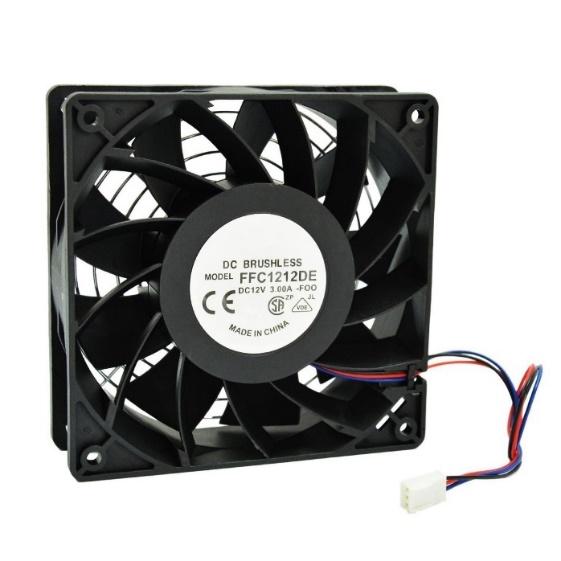TABLE OF CONTENTS
If you’ve ever gone rummaging through your BIOS, you might have stumbled across the terms PWM, DC, and Auto in the fan control section.
In this article, I’ll go over PWM vs. DC mode fans and what modes to use for effective cooling and low noise levels.
PWM vs. DC vs. Auto Fan Modes
The Short Answer – DC or PWM Mode?
Before getting started on the explanation, I’ll condense it down for those who want a quick answer.
If you have a 3-pin fan connector, pick DC mode. On the other hand, if you have a 4-pin fan connector, select PWM mode.
If your motherboard fan header only has 3 pins, pick DC regardless of whether you have a 4-pin PWM or 3-pin DC fan.
If you want to find out more about these mysterious terms, read on!
What is PWM and How Does it Work?
PWM (Pulse Width Modulation) fans allow motherboards to control fan speeds using rapid power pulses (on-off cycles). Simply put, a PWM fan turns off and on very fast to run at lower speeds.
This type of fan requires a 4-pin fan connector like the one shown below:

As you can see in the PWM fan pin diagram above, the 4th pin (blue) allows the motherboard to send a PWM signal to the fan, which controls its speed.

Steady pulses of power are used to vary fan speeds in PWM mode, which means that the fan motor switches from the ON to OFF state and back to ON rapidly.
However, the voltage (12V) applied to a PWM fan won’t change regardless of fan speed when in this mode.
So, the power delivery graph for a PWM fan looks something like this (called a square wave or pulse wave) –

See those power upticks (camel humps) on every duty cycle? Those are pulses that keep the fan speed to what’s needed by a system.
So, a 10% fan speed effectively means that a fan is ‘on’ only for 10% of the total time it’s running.
Thanks to this behavior, PWM fans can typically achieve much lower speeds than their DC counterparts while lowering power consumption in the process.
Note – Some premium PWM fans can also contain components that will ‘smoothen’ out this square signal a bit, giving it an upward and/or downward slant each time a pulse is detected.
What are DC Fans? How do they Work?
DC (Direct Current) fans are a bit different. For one, they come equipped with a 3-pin connector like this one:

As you can see, the 4th pinout is missing on DC fans.
While PWM fans rely on sending the same voltage (12V) through a fan but turn the power ‘on and off’ rapidly to achieve lower speeds, DC fans can only change speeds by varying the voltage applied to it.

This means that a DC fan will run at full speed when a voltage of 12V is applied to it but will slow down when this voltage is only, say, 7V.
That said, these fans are still limited by a minimum threshold voltage needed to keep the fan spinning, which limits the minimum speeds they can achieve.
For example, here’s a graph that illustrates how a DC fan’s speed (in %) varies with applied voltage:

Well, what about the AUTO mode?
Picking AUTO will leave the choice up to your motherboard to detect and deliver the correct kind of power to a fan.
However, this automatic choice CAN be wrong, so if you’re noticing any strange fan speed behavior, go ahead and change it manually.
What Mode to Pick – DC or PWM?
Now, the above section has probably given you a clue about what happens when picking the wrong mode for a fan.
If you have a DC fan, and you’ve selected PWM mode on that fan header, the fan will ALWAYS receive a voltage of 12V. It just doesn’t have that 4th pin to recognize or control pulses, and you end up with a fan that works at 100% all the time.
If you’ve noticed your PC fans spin at full speed on startup before quieting down, this is why – on some boards (mostly older ones), there’s a short delay on waking from a cold start when a full 12V is applied to the fan header before settling into PWM mode. This is one reason for that annoying ‘rev’ when your PC boots up.
Now, on the flip side, what happens if you pick DC mode for a 4-pin PWM fan? Well, nothing very interesting. It just ends up working as a regular DC fan. You will be limited to a certain minimum speed, but other than that, it’ll work just fine.
PWM vs. DC Fan Noise
PWM fans will generally be quieter than DC fans because sometimes you’ll hear more electrical noise in some motors when they operate below a specific voltage.
Moreover, as I said above, PWM fans can achieve much lower speeds, which again helps with the noise.
DC fans are cheaper to manufacture, and you’ll see them extensively used in systems that are meant to keep fans at a full 100% speed.
Servers are a great example here.

![Where Do You Connect PC Fan PWM Cables To? [Beginner’s Guide] Where Do You Connect PC Fan PWM Cables To? [Beginner’s Guide]](https://www.cgdirector.com/wp-content/uploads/media/2023/12/Where-Do-PWM-Cables-Go-Beginners-Guide-Twitter-1-594x335.jpg)
![How And Where To Plug In All Your Fans On The Motherboard [Updated Guide] How And Where To Plug In All Your Fans On The Motherboard [Updated Guide]](https://www.cgdirector.com/wp-content/uploads/media/2022/05/How-to-and-Where-to-ConnectPlug-in-All-Your-Fans-to-the-Motherboard-Twitter-594x335.jpg)



0 Comments